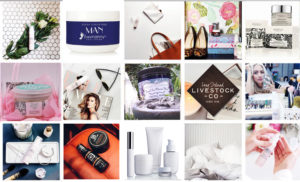LOOKS MATTER. Great Packaging Leads to Greater Sales
Grab that shiny object! Why did you just do that? You may have seen the product in a Youtube commerical, an online banner ad or a TV commercial. Chances are –you were driven by the kick-ass packaging. Marketing encompasses everything around the sale of a product or service, even down to the parts most people never give thought to — including the packaging a product is wrapped in.
Packaging is a vital part of marketing. In many cases, it is the last “ad” a person will see for the product as they browse store shelves before deciding what to buy. Effective product packaging attracts attention in a positive way and entices consumers to buy. As such, every marketer and entrepreneur needs to understand the power of packaging for driving sales.
Product Packaging….huh?
At its simplest, product packaging is simply that: the manner in which a product is enclosed before sale. Some products may require specific packaging types for safety, such as food items. Others mainly use packaging to convey information to the buyer.
In a broader sense, product packaging refers to the entire process of design, production, and use of packaging to both enclose and sell items. Thinking about it in this way makes it easier to see that product packaging has a very impactful marketing component.
Watergraphics designed Packaging Influences Buying Behavior.
Even for highly rational people, there is always an emotional aspect to buying something. Many people are not consciously aware of the degree to which their emotions drive purchases, especially impulse purchases. Product packaging designers, on the other hand, are well aware of this propensity to make emotionally-driven buying decisions — and they use it to guide their efforts.
The ways in which packaging influences positive and negative emotions, and subsequently buying behavior, has been the focus of much research. For example, an article from the journal Psychology & Marketing published in October 2013 describes how researchers used an fMRI machine to measure brain activity while study participants viewed different types of packaging.
What Consumers Want
Even though consumers may not consciously recognize all the ways in which packaging affects them, there are some things consumers actively look for. Making sure packaging succeeds in giving consumers what they want in these areas will help make more sales.
- Packaging needs to clearly identify the product and brand, especially to help loyal consumers find it easily. The most relevant information about the product should also be clearly explained, such as the size of clothing or ingredients of food products.
- Some packaging has a storage or protective function for the product, even after purchase. If packaging can double as a storage or carrying case, it should be durable, compact, and easy to use.
- With growing awareness of the need for sustainable living, many consumers are looking for “green” packaging, i.e. packaging that can be recycled or reused. Minimalist packaging is also a plus, as it uses fewer materials.
- With the wealth of different products on the market in nearly every category, a fresh, new idea always helps a product to stand out. It’s often better to make packaging that is attractive and unique in some way than to stick with familiar designs. Some caution is needed, however. A package that is too unusual may turn consumers off.
Some Examples of packaging designed by WATERGRAPHICS
There are successful packaging stories to be found everywhere, produced by giant corporations and scrappy startups alike. Successful packaging is always attractive to the consumer, helping to draw them in by promising a great experience with the product inside.
Save
Save

